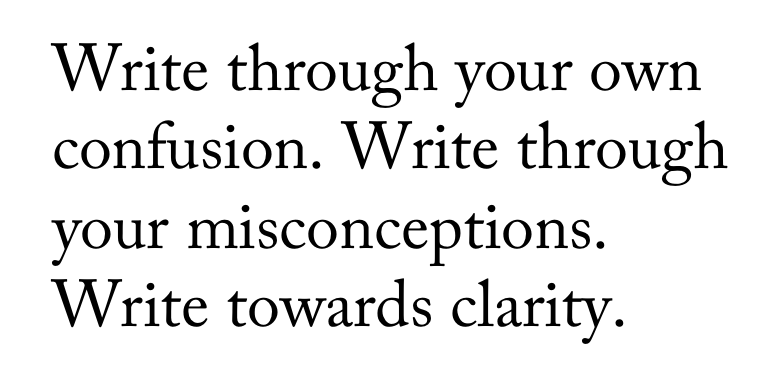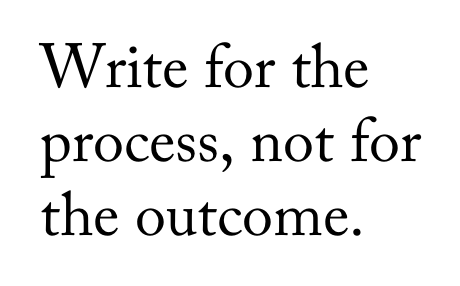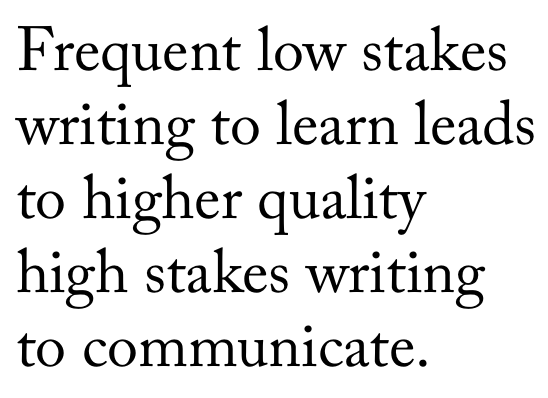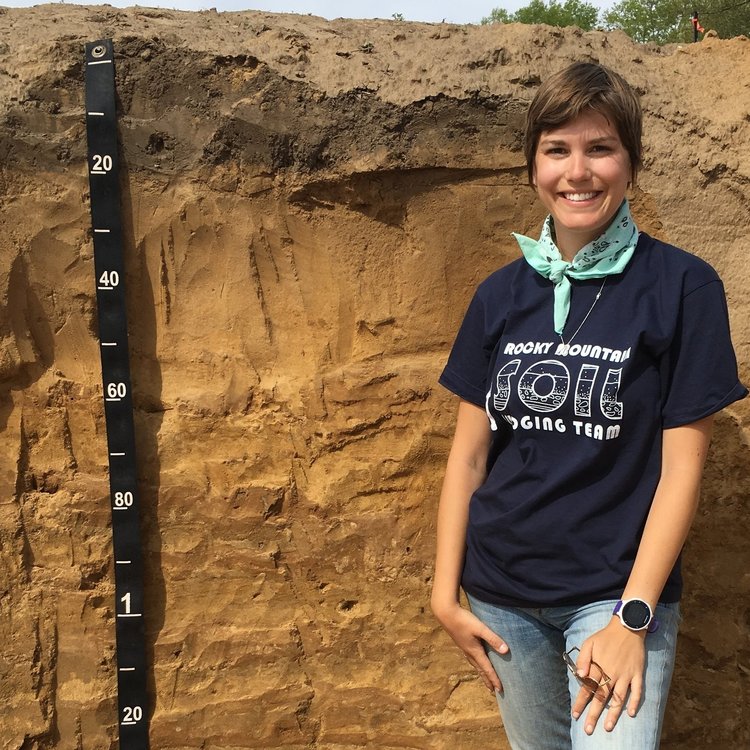
Write to learn, not just to communicate.
Your writing process helps you learn — here’s how to do more of it

This article was originally published by Yamina Pressler on The Writing Cooperative.
So much of our writing here on Medium and elsewhere is written to communicate something. We write with our audience in mind and work hard to select the perfect turns of phrase to keep our readers reading. In non-fiction we communicate events, facts and theories. In fiction, we communicate emotions, ideas, and opinions. Usually, our writing has the end goal not just of being read but also that our reader learns something.
But what if it didn’t. What if the primary goal of our writing was to learn something ourselves?
Writing can be an incredible tool for learning and understanding complex ideas. Writing can help you organize your thoughts, ascribe meaning to new concepts and see your own misconceptions about a topic. When you write, you connect ideas in ways you wouldn’t by just thinking about them.
Have you ever sat down and tried to write about something you thought you understood but then, when the words didn’t come easily, you realized that you might not actually understand the topic as well as you thought? You’re not alone. This happens to me all the time.
My primary writing tasks are science writing. They are technical, littered with jargon, and bound by complex ideas that interact on multiple scales. It gets complicated quickly yet the goal of my writing is to distill all of it into easily readable sentences.
I often find myself struggling through concepts by way of writing. Sometimes it feels like I should wait and come back when I have a clearer picture of what I’m trying to say. At this point, it is important to keep writing.

If I hadn’t sat down and attempted to put ideas on the page, I would have kept thinking I fully understood the topic. Writing to learn about my own understanding has become a critical part of my writing process.
Writing is integral to learning, yet we often don’t treat it that way. For the most part, writing is seen as a tool to communicate to others, not as a tool to communicate with ourselves. There’s a whole field of study in science education on writing to learn that is often juxtaposed against writing to communicate.
Writing to learn is effective because it provides a space for the writer to work through ideas, build connections between those ideas, and find ways to articulate nuance. Writing also helps with retention of material. Such “low stakes writing” as Peter Elbow would call it, is a place where writers can practice their writing without the pressure of an audience. Here, writers can use writing to make meaning and deepen their understanding of a topic
How can we incorporate low stakes writing to learn into our writing routine? It may seem counterintuitive to spend time crafting sentences for something that may never get read.
The truth is, you are probably already writing to learn without realizing it. So a better question is, how can we be more mindful about our own writing to learn and use it to strengthen our creative process?
. . .
One. Appreciate writing as a learning opportunity
Awareness is the first step to making any changes to your writing routine. Recognizing that your writing is a space for learning is fundamental to incorporating writing to learn into your writing routine.
Look closely at your own writing process and you’ll likely notice where writing itself (not just the research behind the writing) has helped you learn more about your topic. Once you acknowledge that writing is used for more than just to communicate, you can find ways to lower the stakes of your writing.
Work on getting comfortable with the messiness of low stakes writing. Let it be just that — messy. Embrace this writing space as part of the process and try not to curate yourself. Writing is iterative, and you’ll always have a chance to perfect it later.
You don’t even have to read what you wrote because you are here to write, not read or evaluate or overthink. Writing written to learn is not meant to be agonized over.
Two. Set aside time and space for writing to learn
 Once you have decided writing to learn is worth committing to, set aside a time and space to write to learn. Your goal is to counteract the urge that pulls you to focus on only writing to communicate. You can do this several ways.
Once you have decided writing to learn is worth committing to, set aside a time and space to write to learn. Your goal is to counteract the urge that pulls you to focus on only writing to communicate. You can do this several ways.
You can commit to low stakes writing to learn for 10 minutes during your writing session.
You can dedicate a notebook just to writing to learn so that it doesn’t feel like it is interfering with your writing to communicate.
You can consciously notice when your writing naturally turns into a learning process instead of a communicating one. Are you struggling to create write what you mean? Embrace it and keep writing. Spend the time in writing to learn mode while you are there.
However you approach it, carving out space and time for writing to learn will help you learn more about yourself as a writer and as a thinker. Because what is writing if not thinking on a page?
Three. Write about your own writing
Many of us already do this in the form of journaling. In a journaling space, the audience is just us. The stakes are extremely low and writing is done just for the process of it.
Joli Jensen encourages writing about your own writing in her book, Write No Matter What. She suggests writers maintain a “ventilation file” where they can write about the challenges and frustrations of their current writing project. The ventilation file provides a space to air grievances with your current writing project so that you can continue to move forward. It also keeps you connected to your project even on days you don’t want to (or think you can’t) write.
Most importantly, within the ventilation file, you will often find ways to work through the problems you are having with your writing. Writing about your own writing can help you realize what you are missing or where you have gone wrong in your current writing project.
And — it’s easy! Writing about your own writing is extremely low stakes. No one will ever read it, and you may not even go back and read it yourself. It is simply there to be written and in the process of writing lies clarity.
I begin each of my academic writing sessions with a quick write-about-writing exercise where I scribble down thoughts, challenges, ideas, frustrations, anything about my writing process and the project I am about to encounter. My pre-writing sessions get me in the zone before I begin “actually writing”. They also provide a space for me to complain, because well, writing is hard, and sometimes complaining helps!
. . .
Mindfully writing to learn is a gift we can give our writing craft. Have you tried it? What role does writing to learn play in your writing practice? I’d love to hear how you’ve embraced writing as process as part of your creative routine.
Yamina Pressler is a soil ecologist and Ph.D. candidate in the Graduate Degree Program in Ecology and Natural Resource Ecology Laboratory. She received a B.S. in Environmental Management with an emphasis in plant biology from California Polytechnic State University, San Luis Obispo in 2013. Her dissertation research lies at the intersection of soil biology, disturbance ecology, and biogeochemistry where she investigates the effects of wild and prescribed fires on soil food webs and ecosystem carbon cycling. Yamina has a passion for science education where she works with K-12 educators to develop soil ecology curricular materials for their classrooms. Yamina also coaches the CSU Soil Judging Team. You can follow Yamina’s soil ecology adventures on Twitter @yaminapressler and on her website at www.yaminapressler.com.

